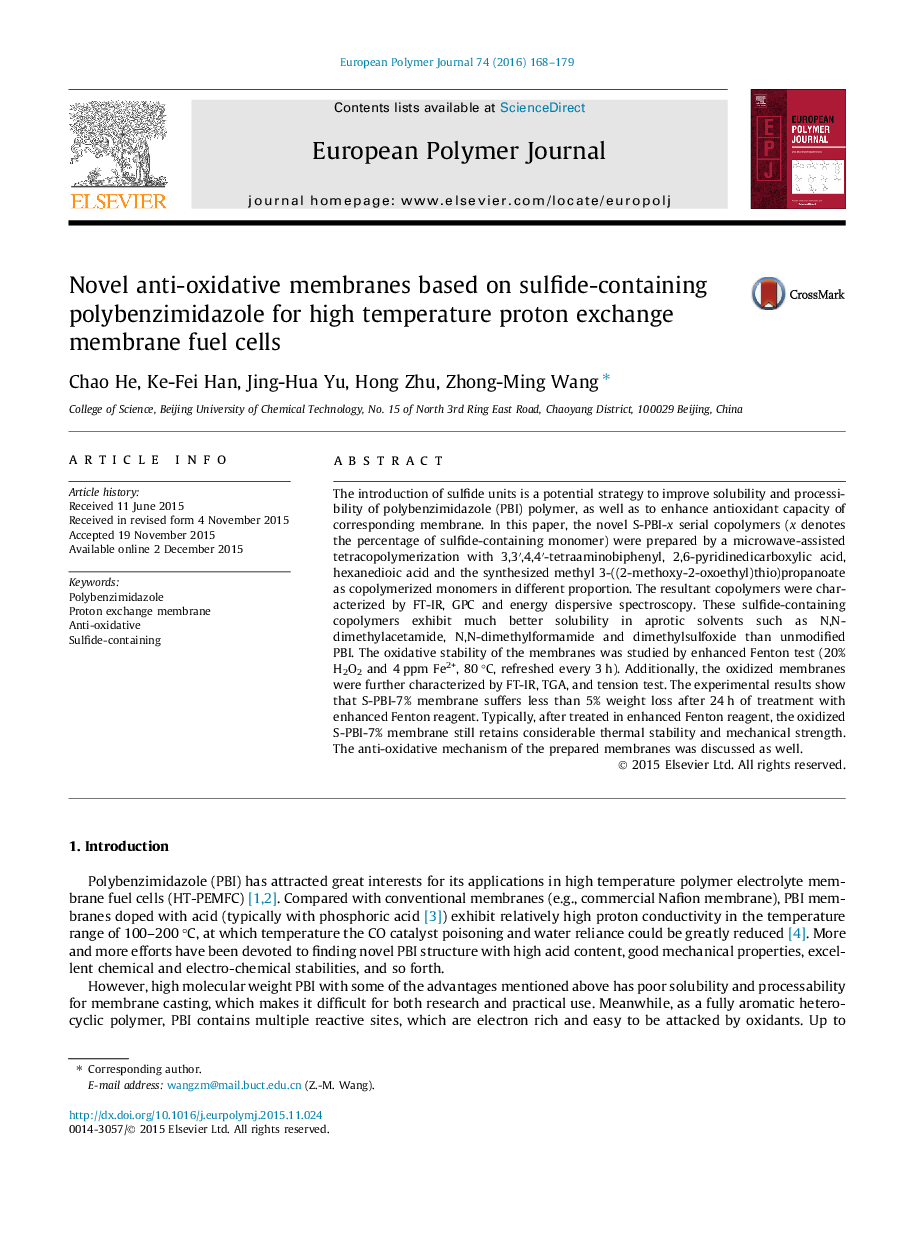| کد مقاله | کد نشریه | سال انتشار | مقاله انگلیسی | نسخه تمام متن |
|---|---|---|---|---|
| 1397794 | 1501361 | 2016 | 12 صفحه PDF | دانلود رایگان |
• Novel sulfide-containing polybenzimidazole membranes were synthesized.
• Solubility of S-PBI-x increases with increasing content of S at a macroscopic level.
• The proton conductivity of S-PBI-7% reached up to 29.25 mS cm−1 at 160 °C.
• S-PBI-x membranes retained great thermal and mechanical stability after Fenton test.
The introduction of sulfide units is a potential strategy to improve solubility and processibility of polybenzimidazole (PBI) polymer, as well as to enhance antioxidant capacity of corresponding membrane. In this paper, the novel S-PBI-x serial copolymers (x denotes the percentage of sulfide-containing monomer) were prepared by a microwave-assisted tetracopolymerization with 3,3′,4,4′-tetraaminobiphenyl, 2,6-pyridinedicarboxylic acid, hexanedioic acid and the synthesized methyl 3-((2-methoxy-2-oxoethyl)thio)propanoate as copolymerized monomers in different proportion. The resultant copolymers were characterized by FT-IR, GPC and energy dispersive spectroscopy. These sulfide-containing copolymers exhibit much better solubility in aprotic solvents such as N,N-dimethylacetamide, N,N-dimethylformamide and dimethylsulfoxide than unmodified PBI. The oxidative stability of the membranes was studied by enhanced Fenton test (20% H2O2 and 4 ppm Fe2+, 80 °C, refreshed every 3 h). Additionally, the oxidized membranes were further characterized by FT-IR, TGA, and tension test. The experimental results show that S-PBI-7% membrane suffers less than 5% weight loss after 24 h of treatment with enhanced Fenton reagent. Typically, after treated in enhanced Fenton reagent, the oxidized S-PBI-7% membrane still retains considerable thermal stability and mechanical strength. The anti-oxidative mechanism of the prepared membranes was discussed as well.
This work offers a facile route to introduce flexible sulfide structure into the rigid matrix of PBI polymers. The sulfide unit can act as a powerful free radical scavenger against possible oxidation. The sulfide-containing membrane shows retained stability after oxidation, which may be attributed to the transformation from sulfide to sulfoxide. This study provides new insights for novel membrane design as high temperature PEMs.Figure optionsDownload as PowerPoint slide
Journal: European Polymer Journal - Volume 74, January 2016, Pages 168–179
